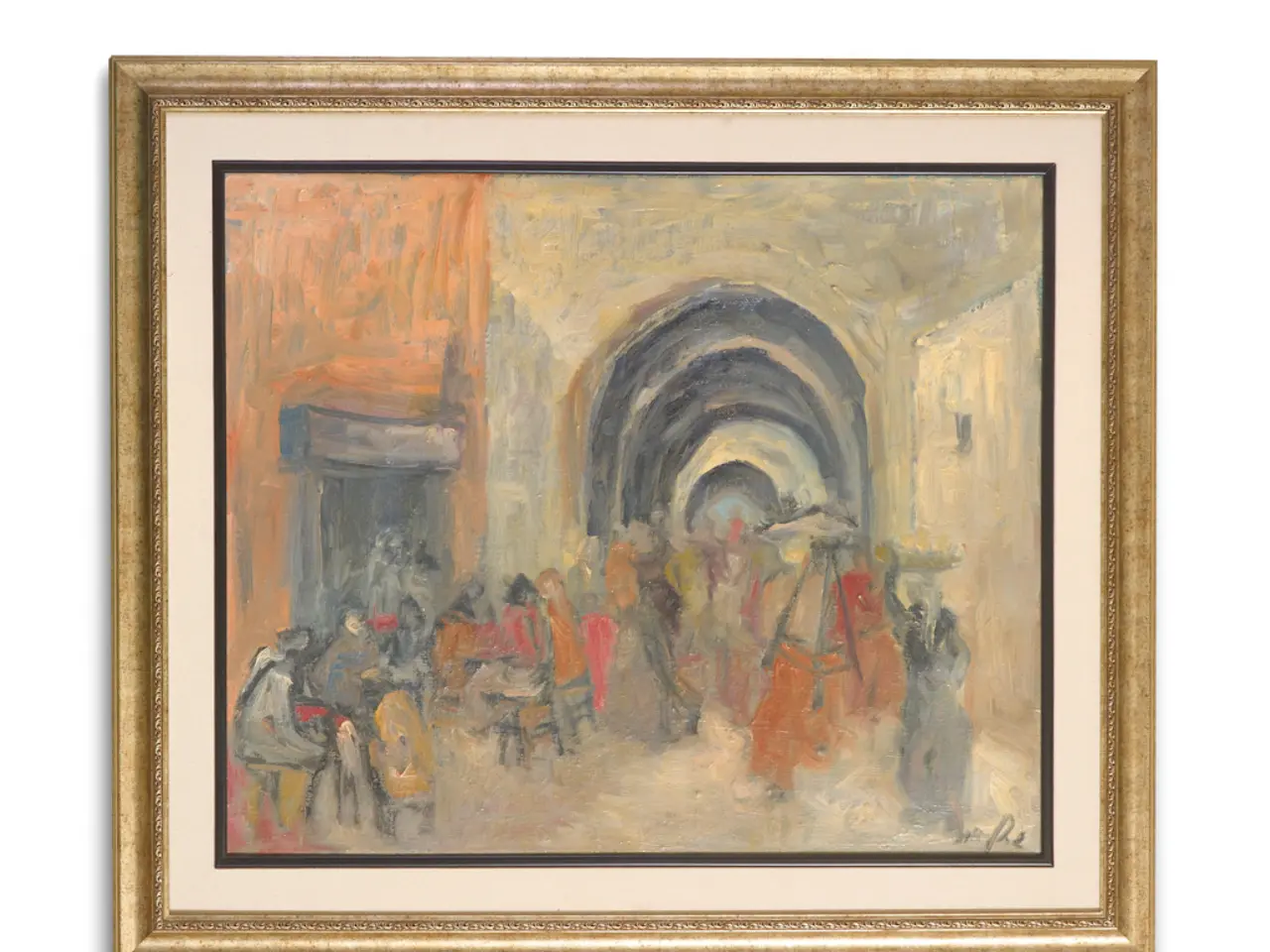Enhancing Artwork Presentation: Selecting Ideal Frames for Your Masterpieces
In the world of art, choosing the right frame can make all the difference. Here's a guide to help you make an informed decision when selecting a frame for your painting.
Color Considerations
The color of the frame plays a significant role in enhancing the visual impact of your painting. It's essential to match the frame color with the dominant colors in the painting. For instance, a warm-toned painting might look best with a frame that has a similar warm hue. Additionally, the frame should blend well with the colors of the room where it will be displayed, ensuring the artwork harmonizes with its surroundings.
Style Considerations
The style of the frame should complement the style of the painting. Traditional art often looks best with classic, ornate frames, while modern or contemporary art is often paired with sleek, minimalist frames. The frame width and profile also matter. Thicker frames can add a dramatic effect, while thinner frames provide a more subtle look. Choose a frame width that complements the size and style of the painting.
Material Considerations
The material of the frame can significantly affect the look and durability of the frame. Wooden frames offer a classic, timeless look and are suitable for traditional art. Options include oak, maple, walnut, and cherry. Walnut and cherry are particularly elegant and durable. Metal frames provide a modern, sleek look and are often used for contemporary art. They can be made from materials like aluminum or steel. Other materials like resin, silver, and gold frames also exist, offering various aesthetic options at different price points.
Additional Tips
- Ensure any mats or mounts used are acid-free to prevent damage to the artwork.
- If the painting is unique or valuable, consider custom framing to enhance its visual appeal and protect it effectively.
By carefully balancing these factors, you can select a frame that enhances the aesthetic of your painting while ensuring it complements the surrounding environment.
Other Considerations
Popular frame profiles include traditional, modern, floating, and shadow box frames, each with its unique visual effect. Composite frames are made from multiple materials, can mimic wood or metal. Glass or acrylic protects the painting against dust and UV rays, while a backing board prevents bending and warping. Sealing keeps moisture out, preventing mold.
Wood frames add warmth, while metal frames offer a modern touch. A thicker mat board can add depth to the presentation. Choose a mat color that complements the artwork. Matching the frame to the painting's style and period enhances its overall impact and creates a cohesive look. Considering the painting's dominant colors, mood, and subject matter helps select a frame that complements the artwork without overpowering it.
Plastic frames are lightweight and affordable, good for casual displays. Acrylic is lightweight, shatter-resistant, and offers UV protection, but it can scratch more easily than glass. Glass offers clarity and is less prone to scratching, but it is heavy and can break easily.
In conclusion, choosing the best frame for a painting involves considering several key factors: color, style, and material. By understanding these factors and your personal taste, you can find a frame that enhances the beauty of your painting and protects it effectively.
In the realm of home-and-garden decor, artfully chosen wall art can elevate the aesthetics of your living space. Pairing the right painting with a complementing frame can create harmony between your art and home-and-garden atmosphere.
When it comes to home-and-garden accents, substantial changes can be made by updating picture frames. Much like the impact of choosing the right frame for a painting, swapping out old frames for ones that suit your home's ambiance can transform the overall look and feel of your interior space.








